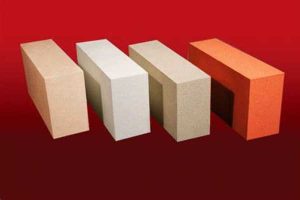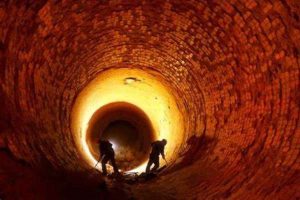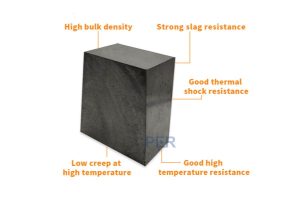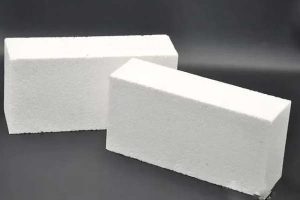Quando se trata da resistência à escória de materiais refratários, Acho que não deveríamos estar familiarizados com isso. A resistência da escória é um dos indicadores importantes para avaliação de materiais refratários.
It is the ability of the refractory to resist slag erosion at high temperatures that generally plays a physicochemical role in the immersion, dissolution, and melt flushing.
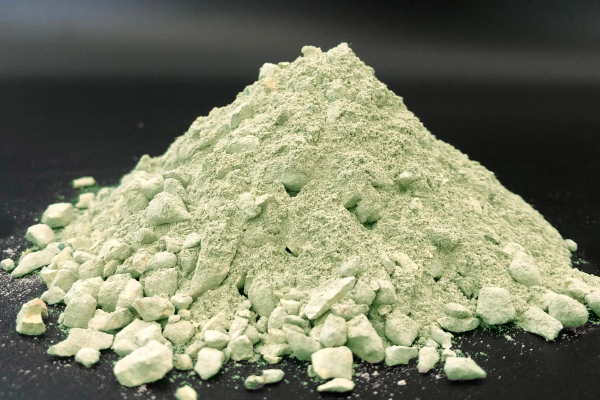
So What are The Methods Used to Determine Slag Resistance?
The methods used to determine the slag resistance of refractory materials are the static method and the dynamic method. The static method has a molten cone method, crucible method, and impregnation method.
Dynamic hair has a rotating impregnation method, scattering slag method, drip slag method, and rotary slag etching method.
The international standard GB8931-88 provides for the determination of slag resistance with the rotary slag erosion method. Its expression method available slag erosion amount mm or % said.
(1) Molten cone method: also known as triangular cone method, the refractory materials, and slag are ground into a fine powder, mixed in different proportions, made of the truncated triangular cone, its shape, tamanho, and standard temperature cone.
And then tested according to the refractories test method, which is a simple method of slag resistance test.
(2) Impregnation method: produtos refratários cut into a round bar shape, at the specified temperature, after a certain time of dip, remove the observation of erosion, determine its volume change, and calculate the percentage of erosion.
(3) Rotary slag erosion method: a molding masonry method to determine the slag resistance should pay attention to the atmosphere in the furnace and should be carried out in an oxidizing atmosphere.
After the test, the experimental bricks laid on the furnace lining were removed, and clear surface bonded slag in the determination of the thickness of the specimen, so as not to produce errors.
The other is to divide the tested refractory products into 6 ou 9 pieces of unequal size. The furnace is built in a rotary furnace, the furnace body can be freely tilted, at the speed of -10r/min. Heated to the experimental temperature with gas, in a certain period to add a certain amount of slag, observe the slag erosion, for some time, the bomb will be poured out.
After cooling, disassemble the test blocks built together, along the length of the test block vertical slag erosion surface cut, measuring the experiment before, and after the test block thickness change.
And calculate the amount of slag erosion, which is a relatively good dynamic determination of refractory slag resistance of the experimental method.
Of Course, Each Method Has Its Disadvantages
Melting cone method point: is simple and easy to operate. Desvantagens: it can only reflect the chemical mineral composition of the impact on slag resistance, while other influencing factors do not show.
Compared to the impregnation method a better dynamic determination of refractory slag resistance of the experimental method point: is intuitive, comparative, and repeatable.
But also has shortcomings: the furnace atmosphere is more difficult to control, and the experimental post-test block thickness determination is not easy to grasp.
How to Test The Thermal Shock Resistance of Refractory Materials? Example of Thermal Spalling Resistance Test
When refractory materials are used in an environment with temperature fluctuations, especially under conditions of rapid cold and heat, stress is generated due to the temperature difference between the surface and the interior of the refractory, causing deterioration or destruction of the refractory’s organization, which in turn causes spalling damage.
It can be seen that, compared with the loss of refractory caused by slag erosion, the spalling damage caused by tissue deterioration or damage is non-progressive, ou seja, sudden. Portanto, the refractory’s resistance to thermal spalling damage, isso é, the refractory’s resistance to thermal shock performance of the poor not only directly affects the refractory
Evaluation of the thermal shock resistance of a refractory material generally consists of two experimental parts.
Primeiro, the heating and cooling of the refractory specimens, isso é, thermal shock experiments, so that the internal structure of the refractory material produces deterioration or damage.
This is followed by the measurement and evaluation of the refractory specimen after the thermal shock experiment.
For a refractory specimen, it can be heated and cooled in different ways, and its resistance to thermal shock can also be evaluated in different ways.
The refractory specimens are pressed using high-purity magnesium oxide sand and chromite as the main raw materials.
o formed refractory bricks (230mm*114mm*65mm) are fired at 1800°C and then used for thermal shock experiments.
The experiment was mainly to investigate the effect of special additives on the thermal shock resistance of the MgO-ChrO refractory.
The experimental temperature was 1200°C and air cooling was used.
The experiments were repeated until the heated surface of the refractory specimens spalled. And the number of times the refractory specimens were heated and cooled when spalling occurred was used as an index to evaluate the thermal shock resistance of the refractories.
The experimental results are shown in Figure 12-1-4. When the number of special additives added was 3%, the refractory material had good thermal shock resistance.
And the thermal shock resistance was about 1 time higher than that of the standard refractory specimen (the amount of special additives added was 0).
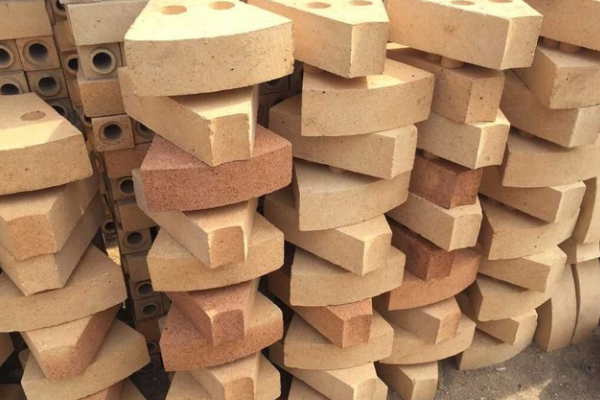
Test Method for Thermal Shock Resistance of Refractory Materials
The performance of a refractory material that resists rapid changes in temperature without blowing up or flaking off is called thermal shock resistance.
Refractory materials used in high-temperature equipment are almost always subject to varying degrees of thermal shock. The temperature change in the furnace causes a temperature difference between different parts of the product, which results in a deformation difference between different parts of the refractory.
If the temperature difference between adjacent parts of the product is too large, ou seja, the deformation difference is too large, considerable internal stress is generated in the material. When the internal stress value is over the structural strength of the material itself, the material will break.
Cement kilns are often used in the process of changes in process conditions and sudden equipment failure, sudden stopping of kiln cooling and reopening of the kiln heating, etc.
The shear stress that appears in the ellipticity of the rotary kiln rotation has a cyclical effect on the lining brick, the change of flame combustion condition, the shedding of kiln skin, the detachment and covering of clinker.
So that the lining brick is subjected to thermal stress, mechanical stress and their additive cooperation, which eventually leads to cracks and even spalling of the lining brick.
In this case, whether the refractory material can maintain a long service life should be confirmed by its thermal shock resistance testing and assessment.
The test method of thermal shock resistance is about the conditions that cause temperature difference (such as heating method, high temperature of heating, cooling method) and measurement method (such as weight loss by breakage, loss by breakage and product, loss by mechanical strength, etc.), etc.
The standards of each country’s regulation history are not consistent, and the test conditions specified in each country’s standards may not always be consistent with the real conditions of the use of refractory products in high-temperature equipment.
No entanto, to obtain the results of this test in a short period, it is often used to accelerate the rupture of the product using rapid changes in heat and cold. The results of this test can still be considered to have relative significance in terms of evaluation value.
Current Standards for Thermal Shock Resistance of Refractory Materials:
GBT 30873-2014 Materiais Refratários
Thermal shock resistance test method”: This standard specifies the terms and definitions, principles, equipment, specimens, test procedures, results presentation and processing, and test reports of the thermal shock resistance test method for refractory materials. This standard applies to the determination of thermal shock resistance of refractory materials.
YBT 376.3-2004 Test method for thermal shock resistance of refractory products
Part 3: Water cooling – crack determination method”: This part of YB/T376 specifies the principle, equipment, specimen, test procedure, result calculation, etc. of the thermal shock resistance test method (water cooling – crack determination method) for refractory products. This part applies to the determination of thermal shock resistance of refractory materials such as long spouts, immersion spouts, plug bars, and sizing spouts.
Please pay attention to the PER Refractories website, we will update refractory-related knowledge regularly for your reference.
Também, you are welcome to contact our company at any time for more information on refractory bricks and refractory castables.

